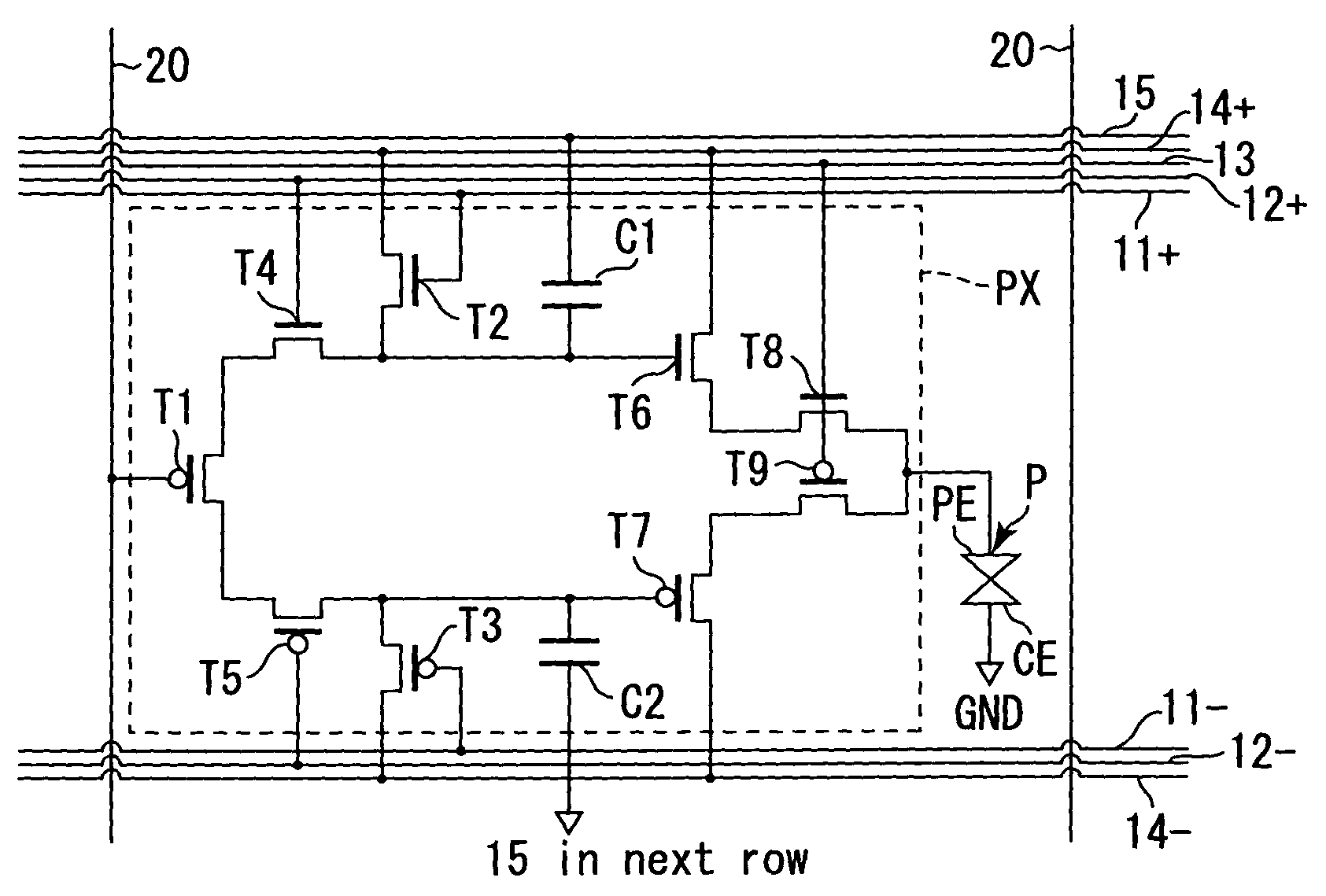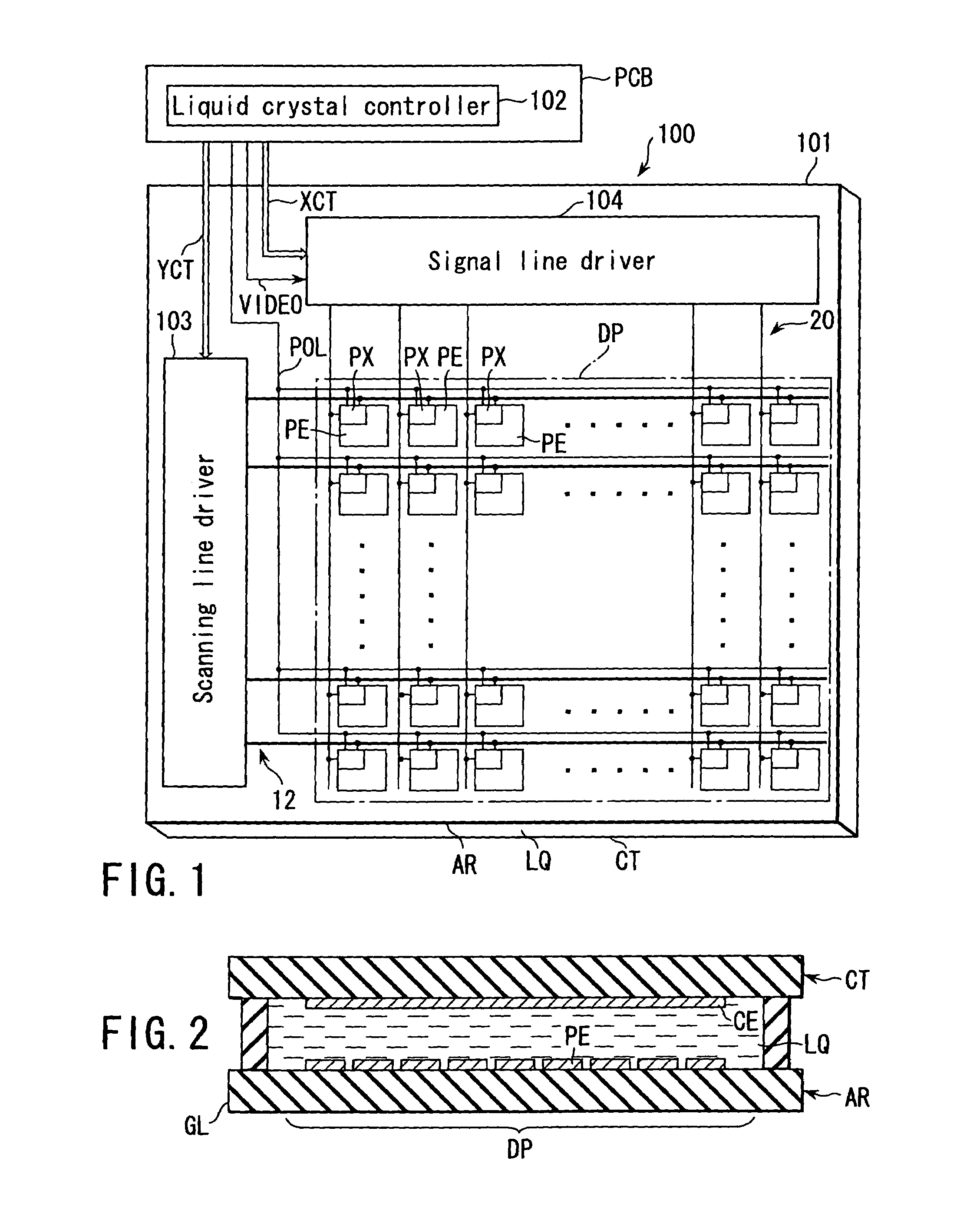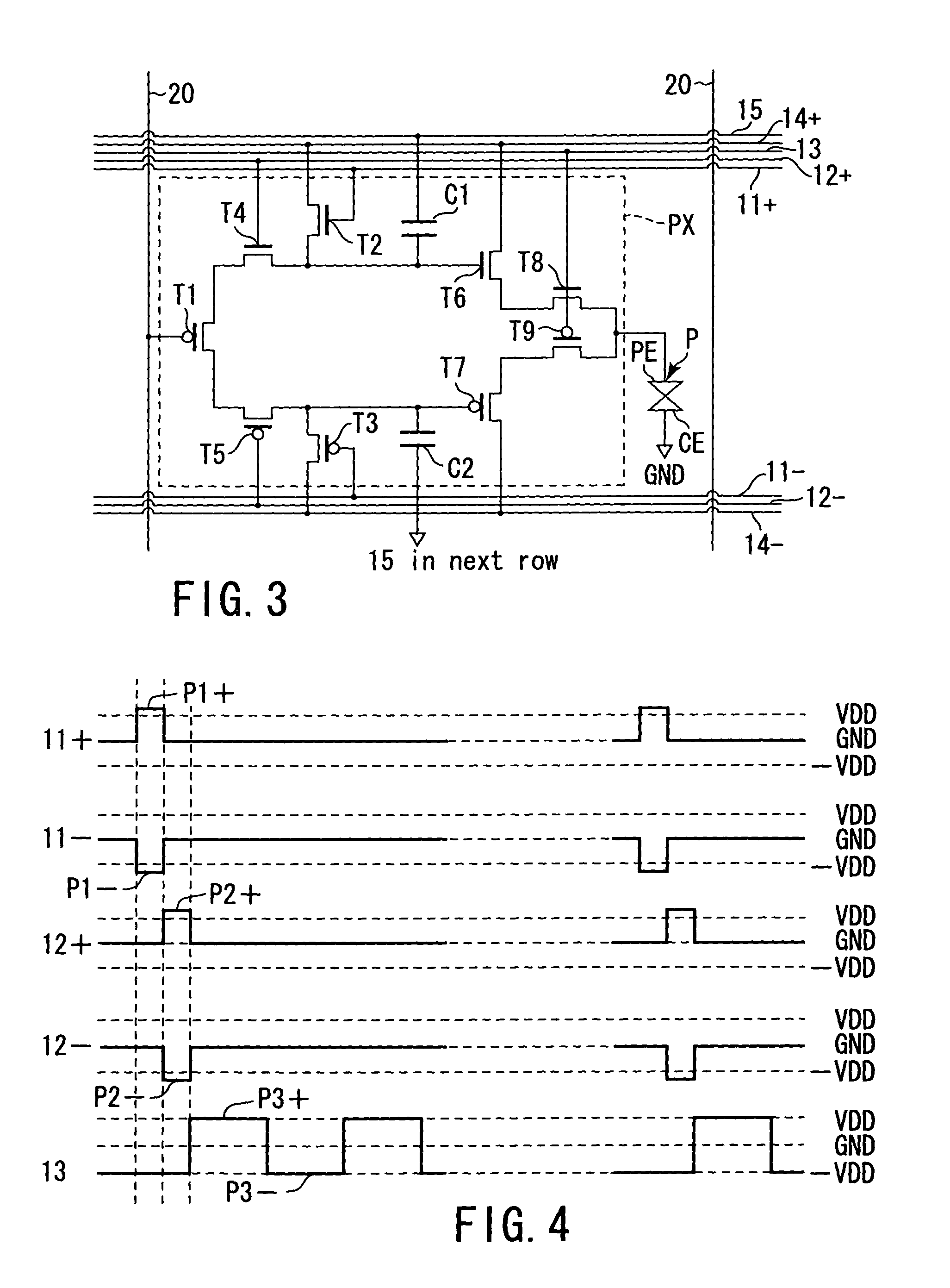Memory circuit, display circuit, and display device
- Summary
- Abstract
- Description
- Claims
- Application Information
AI Technical Summary
Benefits of technology
Problems solved by technology
Method used
Image
Examples
Embodiment Construction
[0028]A liquid crystal display device according to an embodiment of the present invention will now be described with reference to the accompanying drawings.
[0029]FIG. 1 shows a schematic circuit configuration of the liquid crystal display device 100, and FIG. 2 shows a schematic sectional structure of the liquid crystal display device 100.
[0030]The liquid crystal display device 100 includes a liquid crystal display panel 101 and a liquid crystal controller 102 for controlling the liquid crystal display panel 101. The liquid crystal display panel 101 has a structure that a liquid crystal layer LQ is held between an array substrate AR and a counter substrate CT. The liquid crystal controller 102 is disposed on a drive circuit board PCB provided independently of the liquid crystal display panel 101.
[0031]The array substrate AR includes a plurality of pixel electrodes PE arrayed in a matrix of rows and columns within a display area DP on a glass plate GL, a plurality of scanning lines 1...
PUM
 Login to View More
Login to View More Abstract
Description
Claims
Application Information
 Login to View More
Login to View More - R&D
- Intellectual Property
- Life Sciences
- Materials
- Tech Scout
- Unparalleled Data Quality
- Higher Quality Content
- 60% Fewer Hallucinations
Browse by: Latest US Patents, China's latest patents, Technical Efficacy Thesaurus, Application Domain, Technology Topic, Popular Technical Reports.
© 2025 PatSnap. All rights reserved.Legal|Privacy policy|Modern Slavery Act Transparency Statement|Sitemap|About US| Contact US: help@patsnap.com



